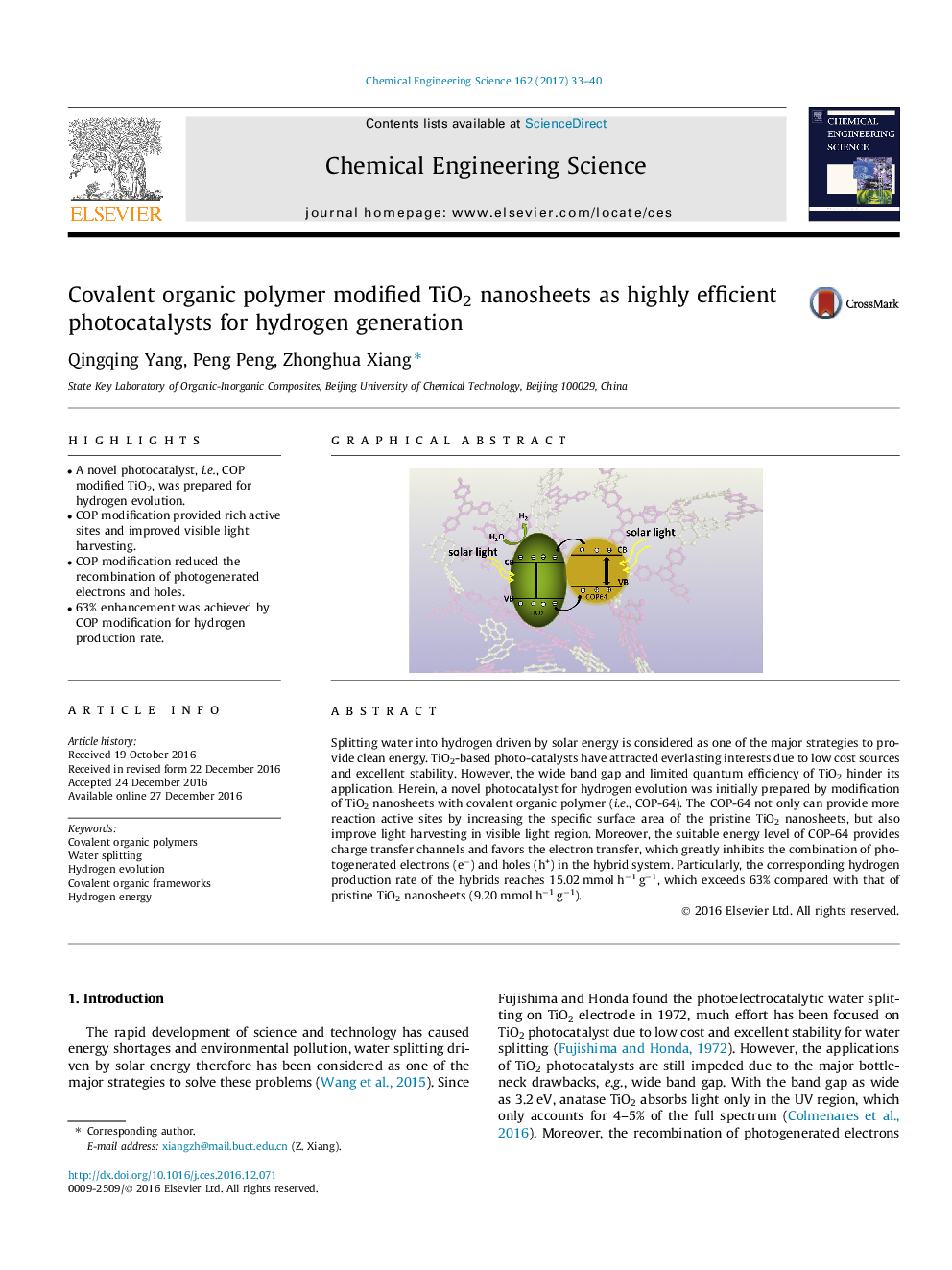| Article ID | Journal | Published Year | Pages | File Type |
|---|---|---|---|---|
| 6467396 | Chemical Engineering Science | 2017 | 8 Pages |
â¢A novel photocatalyst, i.e., COP modified TiO2, was prepared for hydrogen evolution.â¢COP modification provided rich active sites and improved visible light harvesting.â¢COP modification reduced the recombination of photogenerated electrons and holes.â¢63% enhancement was achieved by COP modification for hydrogen production rate.
Splitting water into hydrogen driven by solar energy is considered as one of the major strategies to provide clean energy. TiO2-based photo-catalysts have attracted everlasting interests due to low cost sources and excellent stability. However, the wide band gap and limited quantum efficiency of TiO2 hinder its application. Herein, a novel photocatalyst for hydrogen evolution was initially prepared by modification of TiO2 nanosheets with covalent organic polymer (i.e., COP-64). The COP-64 not only can provide more reaction active sites by increasing the specific surface area of the pristine TiO2 nanosheets, but also improve light harvesting in visible light region. Moreover, the suitable energy level of COP-64 provides charge transfer channels and favors the electron transfer, which greatly inhibits the combination of photogenerated electrons (eâ) and holes (h+) in the hybrid system. Particularly, the corresponding hydrogen production rate of the hybrids reaches 15.02 mmol hâ1 gâ1, which exceeds 63% compared with that of pristine TiO2 nanosheets (9.20 mmol hâ1 gâ1).
Graphical abstractDownload high-res image (125KB)Download full-size image
